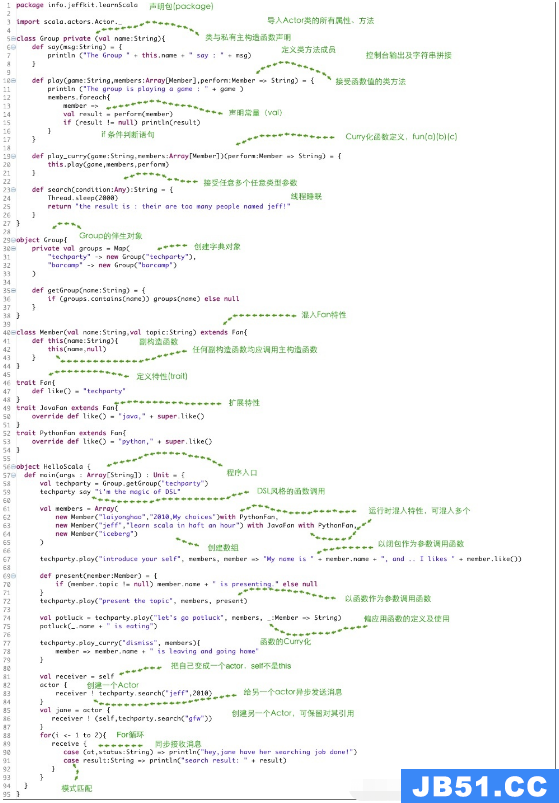我正在查看cats.effect.concurrent.Deferred并注意到其伴随对象内的所有纯工厂方法都返回F [Deferred [F,A]],而不仅仅是Deferred [F,A]
def apply[F[_],A](implicit F: Concurrent[F]): F[Deferred[F,A]] = F.delay(unsafe[F,A])
但
/**
* Like `apply` but returns the newly allocated promise directly instead of wrapping it in `F.delay`.
* This method is considered unsafe because it is not referentially transparent -- it allocates
* mutable state.
*/
def unsafe[F[_]: Concurrent,A]: Deferred[F,A]
为什么?
abstract class Deferred[F[_],A] {
def get: F[A]
def complete(a: A): F[Unit]
}
因此,即使我们直接分配Deferred,也不清楚如何通过其公共方法修改Deferred的状态.所有修改都以F [_]暂停.
解决方法
问题不在于F中是否暂停了变异,而是Deferred.unsafe是否允许您编写不是引用透明的代码.考虑以下两个程序:
import cats.effect.{ContextShift,IO}
import cats.effect.concurrent.Deferred
import cats.implicits._
import scala.concurrent.ExecutionContext
implicit val cs: ContextShift[IO] = IO.contextShift(ExecutionContext.global)
val x = Deferred.unsafe[IO,Int]
val p1 = x.complete(1) *> x.get
val p2 = Deferred.unsafe[IO,Int].complete(1) *> Deferred.unsafe[IO,Int].get
这两个程序不等价:p1将计算1,p2将永远等待.我们可以构造这样的示例这一事实表明Deferred.unsafe不是引用透明的 – 我们不能用引用自由地替换对它的调用,最终得到相同的程序.
如果我们尝试使用Deferred.apply做同样的事情,我们会发现我们不能通过用值替换引用来提出成对的非等价程序.我们可以试试这个:
val x = Deferred[IO,Int] val p1 = x.flatMap(_.complete(1)) *> x.flatMap(_.get) val p2 = Deferred[IO,Int].flatMap(_.complete(1)) *> Deferred[IO,Int].flatMap(_.get)
…但是这给了我们两个相同的程序(都挂起).即使我们尝试这样的事情:
val x = Deferred[IO,Int] val p3 = x.flatMap(x => x.complete(1) *> x.get)
val p4 = Deferred[IO,Int].flatMap(x => x.complete(1) *> x.get)
…这相当于p3,所以我们再也没有打破参考透明度.
当我们使用Deferred.apply时,我们无法在F的上下文之外获得对可变Deferred [IO,Int]的引用这一事实特别在于保护我们.


